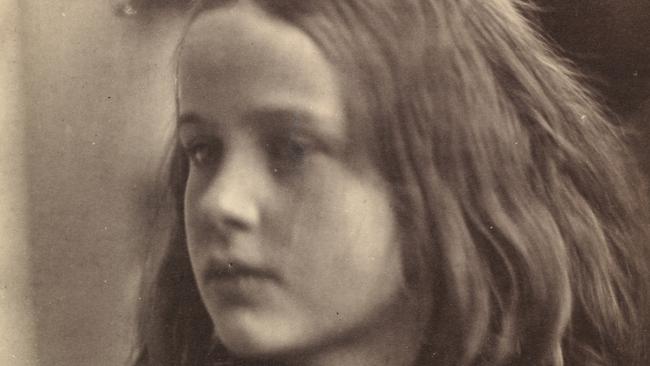Photography pioneer Julia Margaret Cameron Cameron put romance into pictures
Orthodox photographers may not have enjoyed Julia Margaret Cameron’s work, but artists were drawn to the ethereal Renaissance-inspired echoes of the 19th century pioneer’s images.

Today in History
Don't miss out on the headlines from Today in History. Followed categories will be added to My News.
Withering and dismissive, the review might have crushed a less robust personality.
“Mrs Cameron exhibits her series of out-of-focus portraits of celebrities,” the 1865 Photographic Journal pronounced when Julia Margaret Cameron showed her work at the annual exhibition of the Photographic Society of Scotland.
“We must give this lady credit for daring originality, but at the expense of all other photographic qualities.”
The Indian-born Englishwoman was furious at the photographic establishment’s reaction to her artistic, unusual portraits. But she was determined, well-connected to the literary and artistic elite, and financially independent. She was a gifted self-promoter and a brilliantly creative photographer.
Orthodox photographers may not have enjoyed Cameron’s work, but artists were drawn to its ethereal Renaissance-inspired echoes. The famous painter G.F. Watts, her artistic mentor, called Cameron’s work “quite divine”. Cameron’s photographs are valued today for their soft-edged old-masterliness. They are recognised as precursors of the Pictorialists who sought to bring a painterly, artistic quality to the mechanical process of photography.
She was working at a time in the development of photography when commercial photographers were most concerned with capturing as still a likeness as possible — even employing a brace to hold their subjects still. But Cameron sought the fleeting, romantic moment. At almost exactly the same time, painters like Claude Monet were rejecting salon-style traditionalism in favour of techniques which would capture the momentary effects of sunlight and breeze. Monet and his circle would become known as the French Impressionists.
Cameron’s portraits included staged allegorical tableaus and dreamy, pensive close-ups. Many of her pictures showed a mother with her children. Household staff and family members often became her models for these photographs.
Australian audiences can now appreciate Julia Margaret Cameron at first hand, in a large exhibition of her photographic portraits. Julia Margaret Cameron: from the Victoria and Albert Museum, London, now on at the Art Gallery of NSW. The V&A’s photograph specialist Dr Marta Weiss curated the exhibition.
Dr Weiss was delighted to discover an Australian connection with Cameron. It seems that 1870s NSW governor Hercules Robinson was a Cameron fan, because her photographs adorned his drawing room walls in Government House, Sydney. Photographs of the drawing room, decorated with Cameron’s photographs, are a special Sydney addition to the exhibition, which has already toured to Moscow and Ghent.
Most of the exhibition, however, is drawn from the V&A collection. Photographs on view include the beautiful portrait of a local child called Annie Philpot that Cameron called “my first success”.
“I ran all over the house to search for gifts for the child,” she wrote. “I felt as if she entirely had made the picture.”
Julia Margaret Cameron was born on June 11, 1815 in Calcutta where her family had worked for the East India Company for a century. She was 24 when the invention of photography was announced in 1839. Cameron was educated mainly in France, was married in Calcutta to a civil servant, and moved to the UK in 1848.
She received a camera as a Christmas gift from her daughter in 1863, although Dr Weiss speculates that Cameron had dabbled in photography before that. The new camera, however, was a turning point in Cameron’s life. Just 18 months later, she boldly wrote to Henry Cole, director of the South Kensington Museum (which became the V&A).
“She says, ‘I’d be so pleased and proud if my photographs could go into the collection’, and sure enough, he buys over 100 photographs directly,” Dr Weiss says. “She was innovative and original, she really believed in photography as an art form.”
Cameron raised a large family on the Isle of Wight, next door to the poet Alfred Lord Tennyson, her great friend. Scientists Charles Darwin and Sir John Herschel, poets Browning and Longfellow, and historian and philosopher Thomas Carlyle were all in her social circle.
Cameron and her husband migrated to Sri Lanka in 1875 to take charge of their failing coffee plantation, and Cameron died there on January 26, 1879. Cameron once wrote: “I longed to arrest all beauty that came before me.” The exhibition at the AGNSW shows how well she succeeded.
Julia Margaret Cameron: From the Victoria and Albert Museum, Art Gallery of NSW, Art Gallery Rd, The Domain; until October 25, adult $15, conc $12, child $10, artgallery.nsw.gov.au
Originally published as Photography pioneer Julia Margaret Cameron Cameron put romance into pictures


